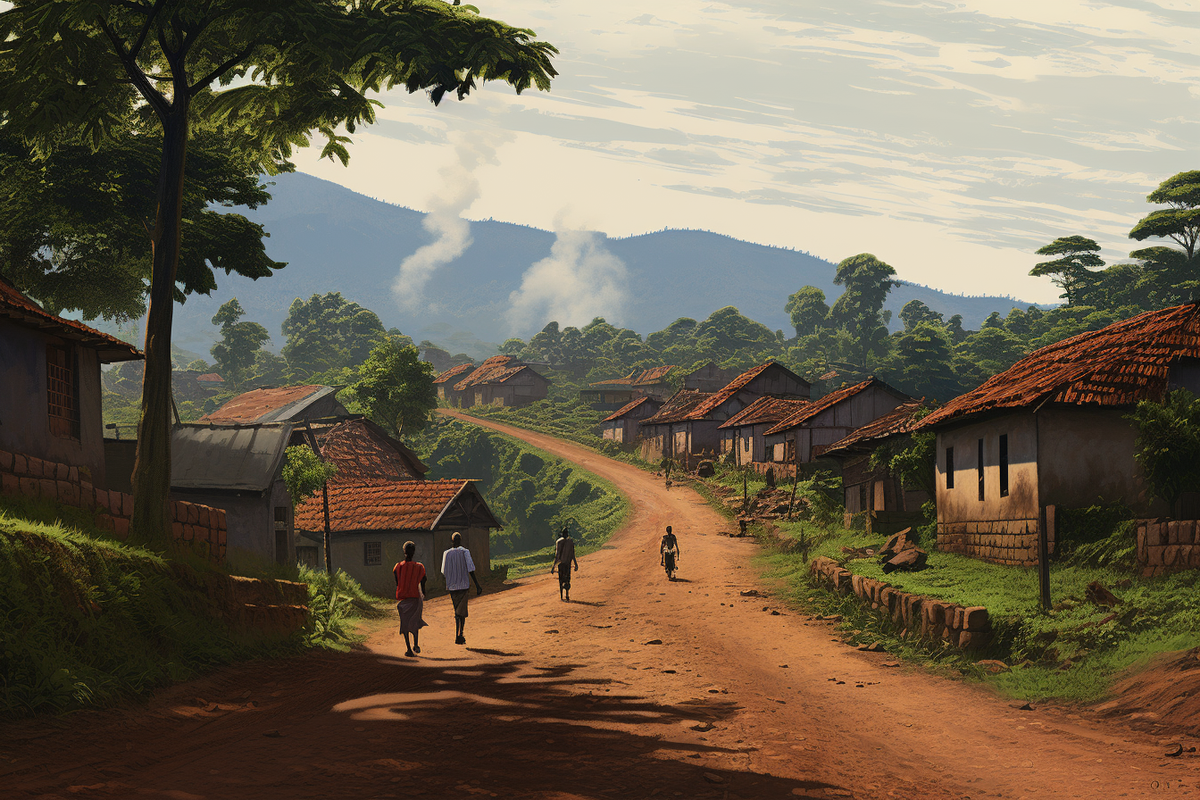A Timeline of Burundi
A broad timeline of Burundi.

Paleolithic and Mesolithic Eras (Prehistory - circa 10,000 BC)
Evidence suggests that the region now known as Burundi was inhabited by early human ancestors. These early inhabitants were primarily hunter-gatherers, relying on the abundant wildlife and natural resources of the region. Stone tools and remnants of ancient campsites provide clues about their nomadic lifestyle.
Neolithic Transition (circa 10,000 BC - 3000 BC)
As the climate became more stable, there was a gradual shift from hunting-gathering to rudimentary agriculture. Early inhabitants began to settle in specific areas, cultivating crops and domesticating animals. This transition is evident from archaeological sites that show remnants of early farming communities.
Arrival of the Twa (circa 3000 BC - 1000 BC)
The Twa, a Pygmy hunter-gatherer community, are believed to be among the earliest inhabitants of the region. Their presence is marked by distinct pottery styles, rock paintings, and other artifacts that provide insights into their culture and way of life.
Migration of the Hutu and Tutsi (circa 1000 BC - 1000 AD)
Over time, Bantu-speaking Hutu agriculturalists began to migrate into the area, introducing new farming techniques and crops. This was followed by the arrival of the Tutsi, traditionally cattle herders. The interactions between these groups, along with the indigenous Twa, laid the foundation for the region's complex socio-cultural dynamics.
Emergence of the Kingdom (circa 1000 AD - 1400 AD)
The foundations of the Kingdom of Burundi were laid between the 10th and 14th centuries. As the Hutu and Tutsi populations grew and interacted, local chiefdoms began to emerge. These chiefdoms often competed for resources and influence, leading to a complex web of alliances and rivalries.
Consolidation under the Tutsi Monarchy (1400 AD - 1600 AD)
By the 15th century, one of these chiefdoms, led by Tutsi elites, began to consolidate power and expand its territory. This marked the beginning of the centralized Kingdom of Burundi. The kingdom developed a sophisticated hierarchy, with the king, known as the "Mwami," at the top, followed by regional chiefs and local administrators.
Golden Age of the Kingdom (1600 AD - 1800 AD)
The 17th and 18th centuries are often considered the golden age of the Kingdom of Burundi. The kingdom reached its zenith in terms of territorial expansion, cultural development, and political influence. Rituals, ceremonies, and the royal drummers of Burundi became integral to the kingdom's identity and governance.
Challenges and External Pressures (1800 AD - 1890 AD)
The 19th century brought challenges for the Kingdom of Burundi. Internal power struggles, coupled with external pressures from neighbouring kingdoms and Arab traders, threatened the kingdom's stability. Despite these challenges, the kingdom managed to maintain its sovereignty and resisted major external invasions until the arrival of European colonial powers.
European Exploration and Colonisation (1890 AD - 1962 AD)
The late 19th century saw European explorers and missionaries arrive in the region. In 1890, Burundi became part of German East Africa. After World War I, the League of Nations mandated the territory to Belgium, which administered it (along with Rwanda) as the colony of Ruanda-Urundi.
Struggle for Independence (1950s - 1962)
The post-World War II era saw a rise in nationalist sentiments. Ethnic tensions between the Hutu and Tutsi began to escalate. In 1962, Burundi gained its independence from Belgium, with the Tutsi monarchy initially retaining power.
Turbulent Republic (1966 AD - 1990s)
The monarchy was abolished in 1966, leading to a republic dominated by the Tutsi minority. The subsequent decades were marked by ethnic tensions, coups, and episodes of mass violence, including genocides against both Hutu and Tutsi populations.
Arusha Accords and Aftermath (1990s - 2000s)
The 1990s saw intensified civil conflict between Hutu and Tutsi factions. The Arusha Accords, signed in 2000, aimed to establish a power-sharing agreement and pave the way for peace. However, sporadic violence continued into the 21st century.
Contemporary Burundi (2000s - Present)
While the Arusha Accords brought some stability, political tensions persisted. Controversial elections, allegations of human rights abuses, and periodic unrest have marked recent decades. Despite challenges, Burundi has made efforts towards reconciliation and nation-building





